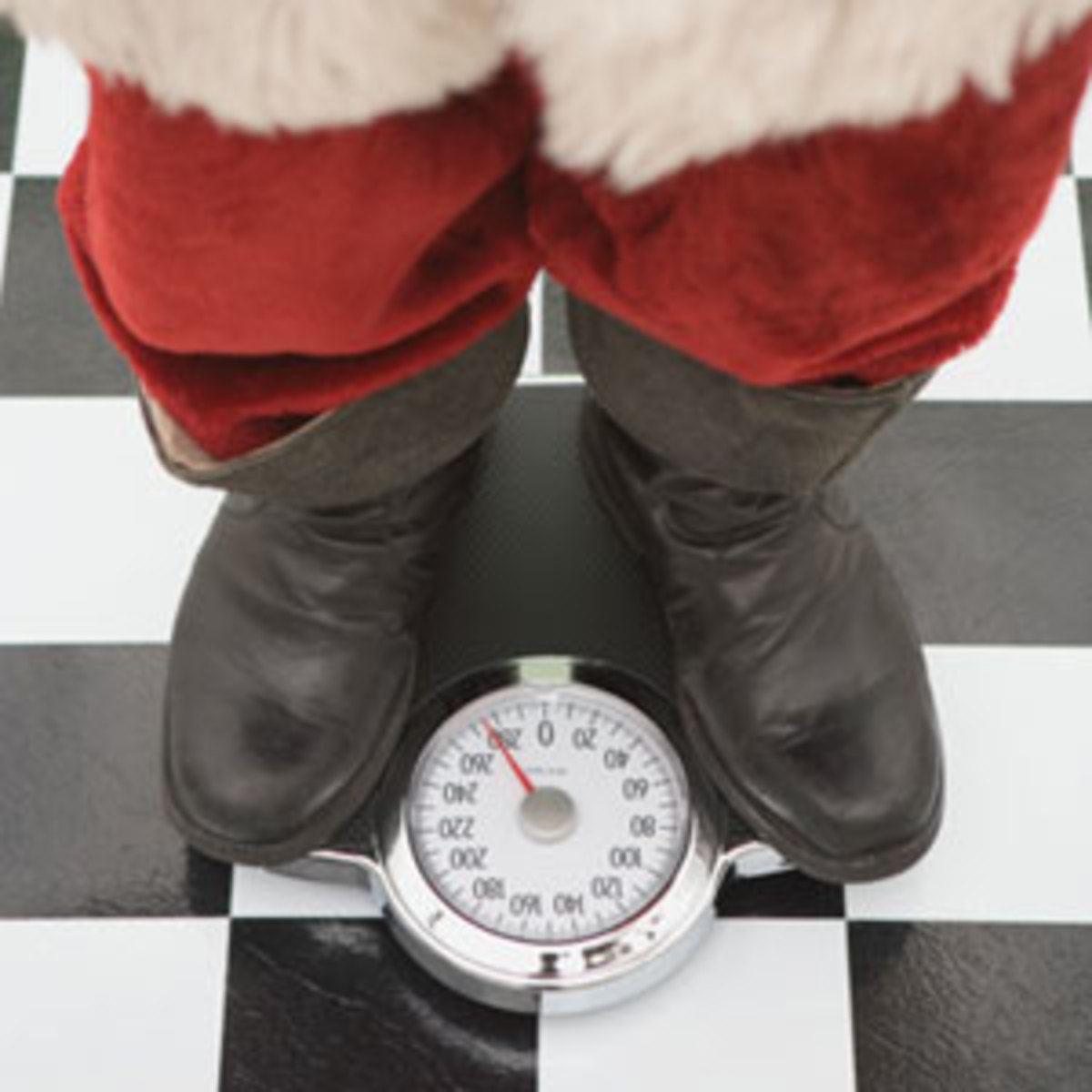The 5:2 Diet for Gradual But Sure Weight Loss

5/2 Diet
Without fail, each year, media puts another diet on the spotlight and the newest one happens to be this one. For perpetual dieters, this diet marks a period of excitement since it gives you the idea that on days you won’t be fasting, you can eat absolutely anything you want. Across the country, you can almost hear the collective sigh of relief. This might be due to the eminently likeable, high profile doctor that first promoted the diet based on results he himself got in terms of weight loss and health benefits to boot. Despite seeming like a fad diet at the onset, a great big following has been gained by intermittent fasting.
Are you looking for a diet that actually works? There is a reason that most folks who have tried the 5:2 diet may just stick to it for life. The best part is that this does not even feel like you are making any restrictions, especially since the two days a week are the minority rather than the majority!
These days, celebrities like Gwyneth Paltrow and Jennifer Aniston all seem to be doing it, not to mention all our colleagues and friends. What is it? It is called the 5:2 Diet. Having become more popular than the Dukan diet and sometimes called ‘the new Atkins,’ the 5:2 diet will help you be skinny enough for the summertime, or the holiday season, depending on what time of the year you start it.
Basically, the rules of this diet is that you eat as much as you like, any food you want most of the week but for two days in a week that are non-consecutive, you need to eat only 500 calories or 600 if you happen to be male.
Also known as the fast diet, the 5.2 diet involves restriction of calories for 2 days that in a week that are not consecutive. The other five days, you can eat with constraint. Originally, this diet became popular in the United Kingdom and throughout Europe, started to spread and then to the United States. It is actually a form of fasting intermittently. Allegedly, the diet claims to have many health benefits aside from promoting weight loss. However, with regard to its effectiveness and safety, there is not a lot of evidence.
In this Diet, a specified low consumption of calories is required. ‘Fasting is the word sometimes used to describe this,’ for 2 days each week. The two fasting days must not be in succession. The other five days, on the other hand, allows eating without moderation. On fasting days, women can eat five hundred calories while men can eat six hundred. Typically, fasting days can include starting the day with a three hundred calorie meal, such as black coffee or green tea, water, ham and scrambled eggs. Dinner and lunch can then consist of grilled meat or fish which amounts to three hundred calories as well. Dieters who have tried this diet claim that a 2 day per week fast might be easier for most folks rather than having to comply with an everyday restriction of calories.
The Buzz
What sparked the buzz about this particular diet was the documentary f BBC2 called Eat Fast and Live Longer last August, which was featured by Michael Mosley, complete with his book spin-off that sold almost four hundred thousand copies in the United Kingdom alone called The Fast Diet. This does not even include the fact that weight loss and health benefits does come from fasting intermittently. In the documentary of Mosley, he lowered his risks of getting both diabetes and cancer, which are 2 of the most common diseases that threaten lives. This came about as a result of reducing not only cholesterol levels and blood glucose to within the normal ranges, but also of the IGF-1 hormone reduction, which is known to be a player of age-related and aging disease. In the process, Mosley also lost nineteen pounds of fat. Wouldn’t you want to try this diet as well, knowing Mosley’s testimony?
Co-written by Mimi Spencer, the book became highly popular in the UK, after all, why do portion control each and every day of your life when all you need to do is skip one or two days per week and concentrate on just those two days? For most people, the appeal of this strategy is hard to beat. Why diet for the entire week when all you need to do is suffer for a day or two, right?
For first timers, the diet might feel like an excuse to gorge on the non-fasting days, such as having morning coffee with a scone full of butter, eating an entire bag of potato chips and maybe more than just a slice of blueberry cheesecake. On fasting days, you can then eat in moderation. Those who have tried it claim that after the first or second week they do lose a pound a week and their jeans do feel lose, plus, they notice that they are more in tune to what they are really hungry for in terms of food and stop when they are full. Some testify that this diet is the easiest one to stick to since it does not really feel like a diet.
Diet Simplicity
The diet’s simplicity is the fact that pretty much, you can eat what you want during 5 days each week, which is partly why this diet is very popular. It is a recommendation made to dieters to consume a ‘normal’ calorie number for the majority of the week. Then, for 2 days that are non-consecutive, to eat a mere twenty-five per cent of their usual food intake, which happens to be six hundred calories for men and five hundred calories for women. For the most part, there are no food restrictions on what you can it. It is expected for women on this diet to lose approximately a pound each week and for men to lose about an equal number of pounds, if not greater.
The Practice of Fasting
For years, the practice of fasting has been around, with testing carried out uncovering the effects potentially as early as the forties. The dawn of 2013, however, ushered a new version of fasting which had previously been associated with political protests and religious rituals. The weight loss wonder was the intermittent fast with some health benefit potential. Basically the dieting community of the UK snapped up this diet especially after they found out that they could eat everything they wanted for most of the week and fast for two days, and still lose weight in the process. This was perfect for beating the Christmas bulge in the year 2012. The phenomenon of fasting for weight loss was set into gear in August of 2012 when the Horizon BBC broadcast journalist and doctor Michael Mosley featured an episode entitled ‘Eat Fast and Live Longer’ presented the ‘genuinely revolutionary’ diet du jour and in January the year after, published the ‘fast diet’ book.
After the book was published by Mosley, Kate Harrison, a journalist from BBC released her own entitled version called ‘The 5:2 Diet Book.’ There are slightly varying recommendations in both books although on both, the general dieting principles remain the same.
Calorie Restriction
When restricting calories on the 5:2 diet, this has been linked to a few benefits including reducing the risk of cancer, stroke and heart disease, living longer and improving control of blood sugar. It also help improve levels of cholesterol, is anti-aging due to lowering the Growth Factor 1 hormone. These have been the benefits portrayed by animal studies. Currently, the opinion of the medical community is that there is no proof that this diet truly has benefits until there are more studies done on actual human beings. Plus, until the benefits are absolutely proven, it is recommended that people at up to two thousand calories per day.
Before embarking on a diet such as this one, there is another recommendation made that diabetic women as well as those that are breast-feeding and pregnant, should seek the advice of their physician before they embark on any type of diet that involves fasting, such as this one. Plus, this type of diet can be unsafe and unsuitable for children and teenagers who may miss out on important nutrients they need for growing, not to mention the fact that they may also develop eating habits that are unhealthy. It may sound easy at first, but this diet is not exactly a breeze. On days you fast you might feel like you are lethargic, are unable to really concentrate and may even suffer dizziness and headaches. If you decide to go on with the diet, ensure that you eat nutritious food on the days that you are not fasting. Healthy food for non-fasting days includes dairy food, turkey, fish and chicken as well as other lean protein. It should also include wholegrain, vegetables and fruits. Keep in mind that when you happen to be following a diet that is low in calories, it is crucial to make each calorie count, which means choosing food which is rich in terms of nutrition.
Breakfast Recipes for the 5:2 Diet Fast Days
Tomato and Cheese Omelettes- 170 calories
Ingredients
1 tbsp Parmesan cheese, grated
Salt and pepper
2 small eggs, free range
7 basil leaves, diced finely
¼ small onion, diced finely
Cherry tomatoes, cut in halves, about 35 grams
5 sprays of cooking oil
Spray oil into a frying pan and fry the onion until soft. Add in the tomatoes and cook for about five to six minutes. Remove the pan from heat and add in the basil leaves that have been finely chopped. Spoon this mixture of tomatoes and basil into a bowl and start with a clean pan.
Use a bit of water to beat the eggs with and season with pepper and salt. Heat the frying pan which is non-stick over moderate heat and add in the eggs. Spread the eggs around the pan the way you would for a pancake or a crepe. Once it sets, sprinkle the parmesan cheese on the egg and spoon in the tomato mixture. Flip over one side of the egg and cook for two more minutes. Slide your wonderful creation off the pan and into a plate. Use black pepper for seasoning. You can serve this as a light lunch with lettuce or other types of salad leaves or you can have this for breakfast with black coffee on the side.
Lunch Recipes for the 5:2 Diet Fast Days
Minestrone Soup-198 calories
400g cans cannellini beans, two cans
400g chopped tomatoes, three cans
8 chopped carrots, medium
2 chopped zucchinis, medium
2 celery stalks, chopped
2 cloves of garlic, crushed
1 finely chopped onion
1 tbsp rapeseed oil, cold pressed
10 cups of vegetable stock
150g of lubella strand pasta or pasta of your choice
1 handful of parsley, fresh and chopped
Pepper and salt to taste
In the oil, sauté garlic and onion until it is translucent and soft. Add carrots, zucchini and celery and gently cook for a few minutes. Add in the vegetable stock, spinach, beans, tomato puree and tomatoes. Bring this to a boil as you mix well. Once boiling, lessen the heat and leave to simmer with a cover for about fifteen minutes. Cook the minestrone soup for another fifteen minutes after adding in the pasta. Add the fresh herbs and season to taste with salt and pepper.
Dinner Recipes for the 5:2 Diet Fast Days
Dinner Salad – 230 calories
Black pepper
1 tbsp balsamic vinegar
38g feta cheese, broken into pieces
50g pickled baby beets, quartered or halved
8 slices cucumber
3 small plum tomatoes, sliced
1 finely grated small carrot
40 g mixed salad leaves
On your plate, layer the ingredients of your salad, beginning with the salad greens as the base. Top this with feta cheese and baby beets. Finish this with a some black pepper and a drizzle of balsamic vinegar.









